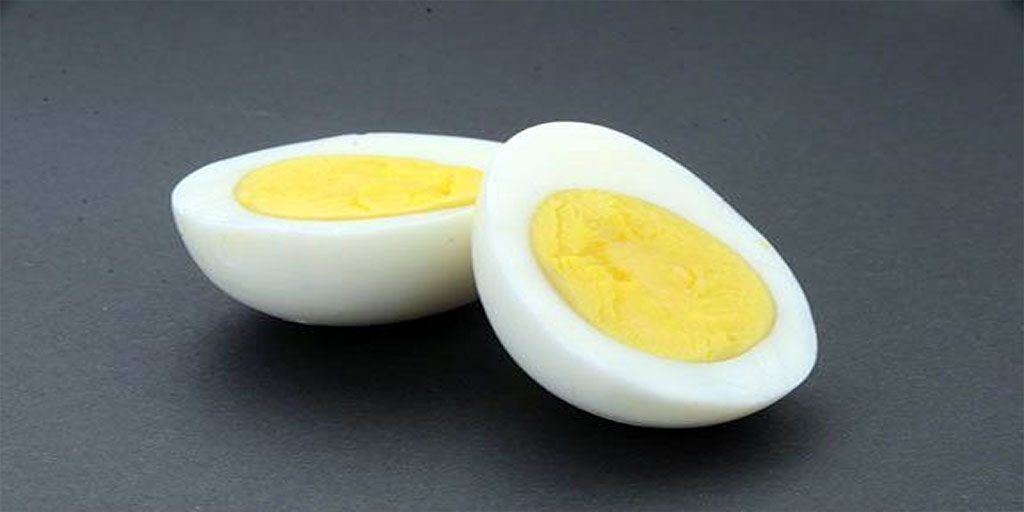


1st January 2023
How to Boil Eggs
The boiled egg. It’s so simple, which—of course—makes it so easy to mess up.
An extra minute in the water could mean the appearance of that pesky green ring (nooo!), and a crumbly, hard-to-peel batch could force you into making egg salad when you were planning on your famous deviled eggs. Basically, one wrong move and you could wind up with egg on your face (see what we did there?).
Boiling an egg is a science, not an art. And like mad scientists, we’ve done countless hours of research and testing to determine the absolute best way to boil an egg.
What’s the difference between a hard-boiled and soft-boiled egg?
Hard-boiled eggs have firm whites and yolks, and are often sliced as a snack, used make deviled eggs or decorated as Easter eggs.
Soft-boiled eggs have a shorter cook time, which gives them firm whites but soft yolks. Soft-boiled eggs are often served for breakfast with dunkable toast strips (called “soldiers”), on top of salads or floating in a hot bowl of ramen.
With this guide, you will have the tools to boil an egg with exactly the kind of yolk you love — soft, hard or anywhere in between.
Disclaimer: To reduce the risk of illness from bacteria, food safety experts recommend that eggs be cooked until yolks are firm. Alternatively, where softer yolks are desired, pasteurized eggs may also be used to reduce the risk of illness from bacteria.
Should I start with hot water or cold water?
Some people suggest starting with the eggs in cold water and bringing the whole pot to a boil together. Others suggest boiling the water first and then dropping the eggs in.
During our testing, we tried both methods — and the cold water method was the clear winner. We actually predicted the hot water eggs would be easier to peel because of the shock of hot water and that the results would be more consistent because the temperature and timing would be more controlled, but found the opposite to be true. Cold water won on both counts.
Now, you can definitely boil eggs successfully either way, but we’ve long recommended the cold water method in our cookbooks and online, and it remains our favorite method for boiled eggs.
What are the health benefits of eggs?
In 2000 the American Heart Association revised their guidelines after decades of studies showed that high levels of cholesterol in food (like eggs) were not to blame for heart disease.
Some egg producers also enhance the omega-3 fat content of their egg yolks by supplementing their chicken feed with things like flaxseed, seaweed and other nutrient-dense foods. Omega-3s are an important anti-inflammatory fat that humans can’t produce on our own.
Whole eggs are high in protein and absolutely packed with vitamins. Highlights include choline, which may enhance memory and brain health, as well as nutrients like lutein and zeaxanthin, which may lower the risk of macular degeneration, which is the leading cause of age-related blindness.
What type of eggs can people eat?
Chicken eggs are the most popular type of eggs for everyday eating, so that’s our focus for this guide, but duck and quail eggs are also fairly common to boil. There are plenty of other edible eggs out there—including goose, emu and ostrich eggs! (Just for comparison’s sake, one ostrich egg is equivalent to about 24 chicken eggs.)
Should I add something to the water?
It’s not necessary to add anything to the water. Some people also swear that adding a bit of salt, vinegar or even baking soda to the boiling water makes eggs easier to peel and/or makes them taste better. We, however, prefer the simplicity of plain ol’ water.
Why do you put boiled eggs in an ice bath after cooking?
The ice bath serves a number of purposes. Most importantly, the shock of cold water halts the cooking process in its tracks. It also contributes to easy peeling and helps the egg keep its shape. If you are planning to eat your eggs warm, just give them a quick dunk so they’re cool enough to peel safely. If you’re planning to eat them cold, they can hang out in the ice bath until you’re ready to eat them.
How do you know how old your eggs are?
Using water to determine the age of eggs is an easy trick. If an uncooked egg sinks in water, it’s fresh. If an egg floats in water, it’s old. Not necessarily bad, just old. If you crack it open and it’s discolored or smells like anything other than a typical egg, toss it. Otherwise, a floating egg is likely just fine for boiling and eating.
Why does age matter for boiled eggs?
Older eggs are often much easier to peel than fresh-from-the-chicken eggs. It’s not that you should let all your eggs expire before you eat them (in fact, please don’t), but you might want to wait a week or two before you boil eggs you picked up from your backyard chickens, local co-op or farmers market. If you buy your eggs at the grocery store, there’s no issue because most eggs at the supermarket aren’t going to be fresh off the farm on the day you buy them.
Why does the yolk sometimes turn green?
Bad news — a green yolk means that you’ve overcooked your egg. If you don’t have time for a do-over, it’s not the end of the world. Over-boiled eggs are still perfectly edible, just not as incredible as they could be. On a scientific level, the discoloration is an indication of the iron from the yolk reacting to hydrogen sulfide from the white, which creates that grayish-green ring. It’s not dangerous, just disappointing.
Why do some hard-boiled eggs smell like sulfur?
It means they are overcooked. The iron sulfide that creates a green ring around the yolks of over-boiled eggs also imparts a distinct sulfur smell. It doesn’t mean the eggs are rotten or inedible. Rotten eggs smell like hydrogen sulfide, which is much more pungent.
Are eggshells useful for anything?
So many things!
One of the most common ways to use eggshells is to keep plants healthy. You can use nutrient-dense eggshells in your composting — they are doubly great outdoors since they act as a natural pesticide for slugs and snails that don’t like sharp shells (and deer, who don’t like the smell of eggs). Indoors, you can crush up egg shells into your potted plants or let the shells soak in a jar of water that you later use to water your plants. You can also start seedlings in them over the winter and plant them in their very compostable containers in the spring.
In addition to the plant-related uses, you can use eggshells as an abrasive pan scrubber, add them to a broth or stock for extra calcium and minerals (just remember to strain them out before consuming or cooking with it), and to sharpen blender blades by running the blender with eggshells and water in it.
What other tools do you need to boil eggs?
As we’ve demonstrated, you don’t need anything but a pot, water, eggs and ice to make boiled eggs, but there are a few egg-related contraptions out there that vary in their degree of usefulness.
- Egg cups: If you eat soft-boiled eggs often, a handy egg cup might be a great addition to your cupboard. They aren’t too expensive and make it much easier to dunk your toast in a gooey yolk. Plus, they make every breakfast feel fancy!
- Egg boiling rack: This is similar to a normal steaming basket, but made specifically for eggs.
- Egg toppers: Egg toppers are single-use tools, and you definitely don’t need one to open an egg. There are some that look like a circular pair of scissors, while others look like something that you’d use to make cocktails rather than to crack an egg.
- Egg slicers: Your grandma might’ve had one of these common wire presses. Yes, she definitely did.
How else can you “boil” an egg?
Steaming: Steaming is another foolproof option that may even rival standard boiling in terms of consistency of hard or soft cooked eggs. You have full control of the cooking time and there’s less risk of cracked eggs in the pot because they aren’t free-floating in water. Give it a try once you master the classic boiling method.
- Fill a pot with about one inch of water and bring to a boil.
- Add eggs to a steamer basket and place inside the pot.
- Cover and cook to your desired yolk consistency (you’ll need to add a minute or two to our time chart above).
- Put them in an ice bath to halt the cooking process.
Baking: Baked boiled eggs is technically an oxymoron, but it works — though the texture and flavor isn’t quite the same as stovetop boiled or steamed eggs.
- Preheat the oven to 340° F (this may vary by oven).
- Place individual eggs into cups of a muffin tin.
- Bake for 30 minutes for hard-boiled eggs.
- Remove eggs carefully and place in an ice bath.
Coddling: Coddling is a lighter boiling method in which the egg is very gently cooked (or barely cooked at all, in some cases, which is also called blanching).
- Start with eggs submerged under about one inch of water.
- Bring the pot to a simmer (not a full boil).
- Immediately remove from heat, cover and set the timer for your desired yolk consistency.
- Place the eggs in an ice bath to halt the cooking process.
Blanching: Blanching is the quick-coddle method used for food safety when preparing a recipe that calls for raw eggs that won’t be cooked in a later step (Caesar dressing, homemade mayonnaise, etc.) or to heat up a previously cooked soft- or hard-boiled egg.
- Boil 3 cups water.
- Remove water from heat and gently drop in an egg.
- Set timer for one minute.
- Place the egg in an ice bath or run under cold water to halt the cooking process.




